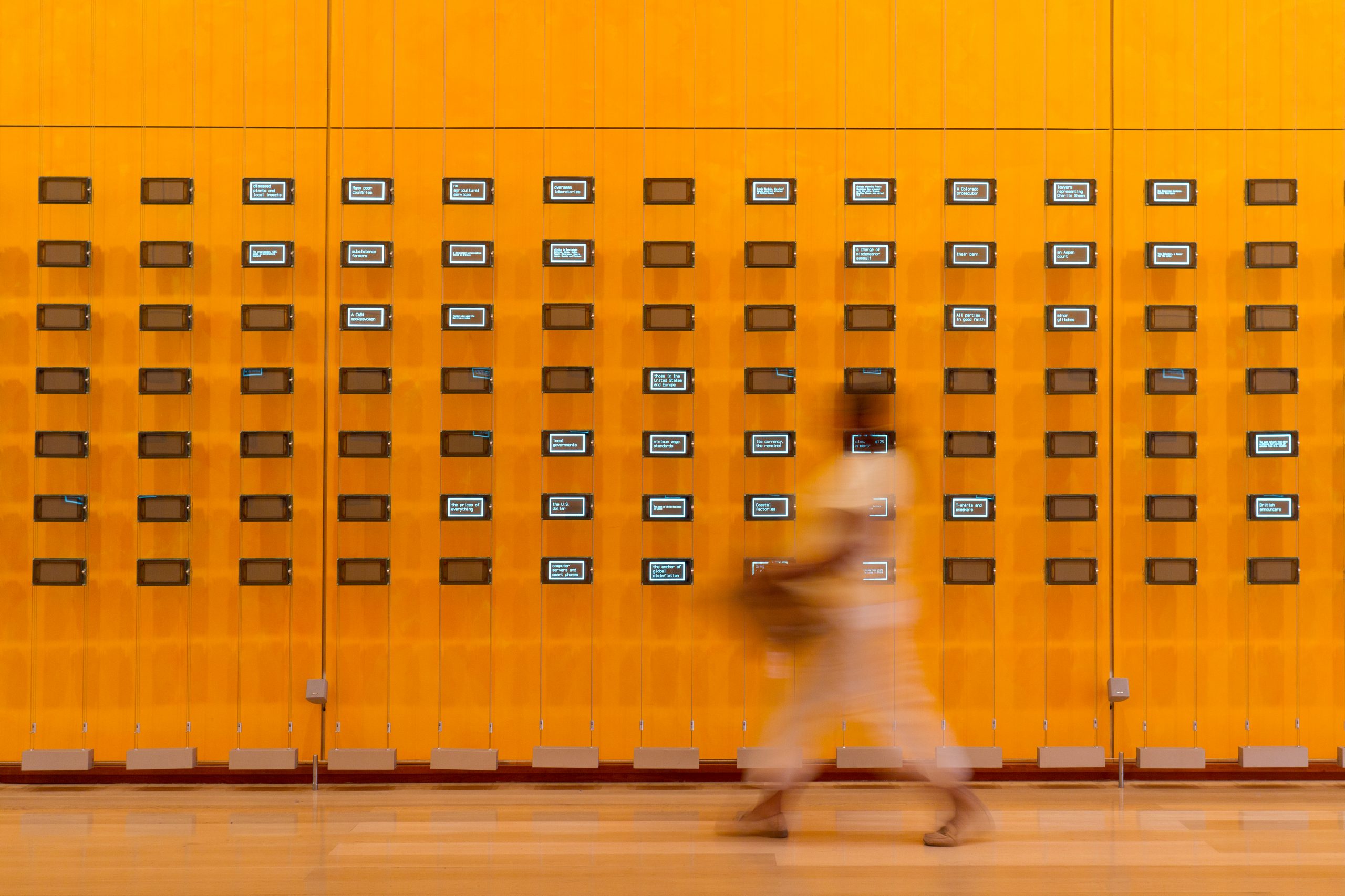
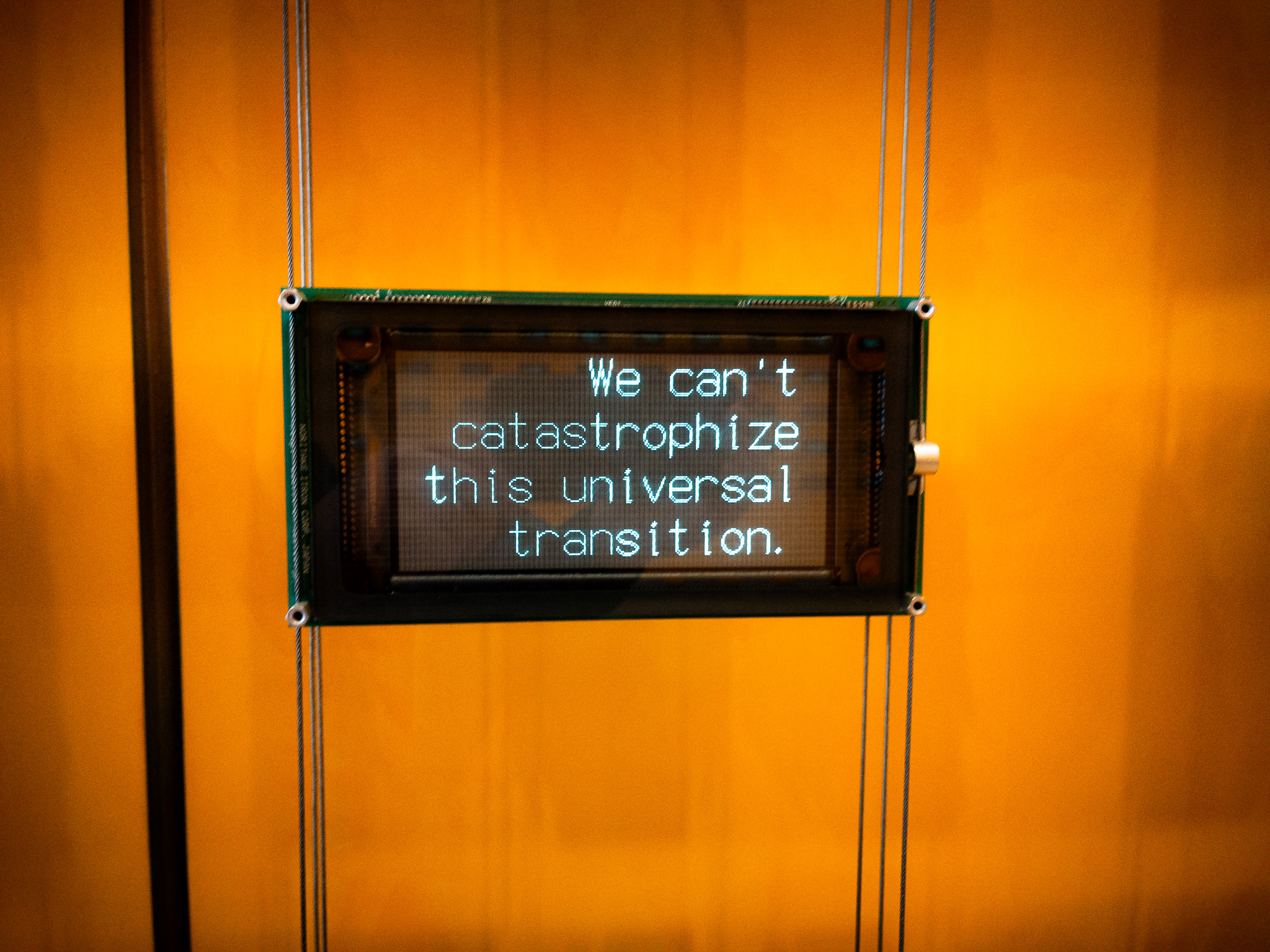

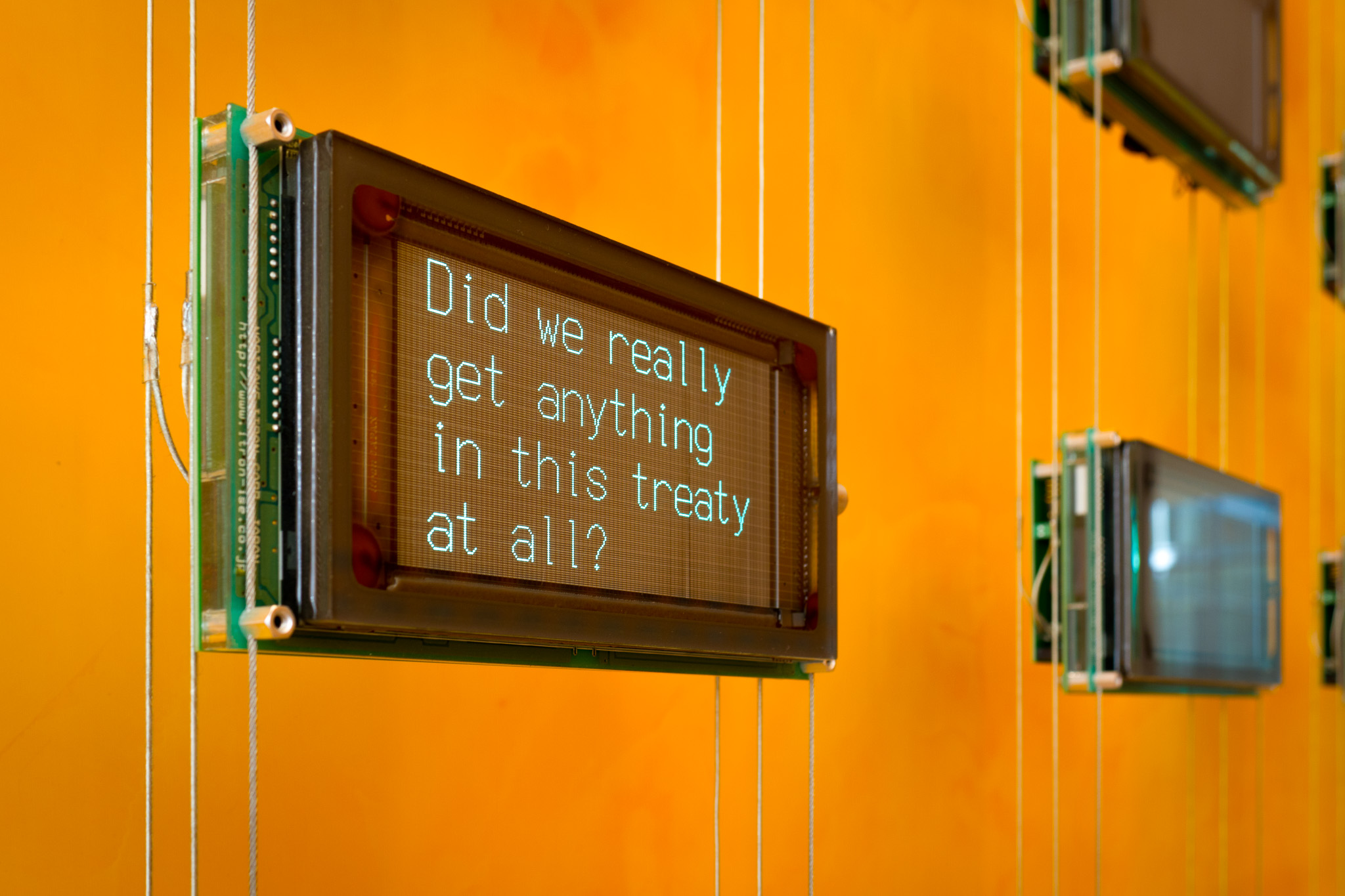
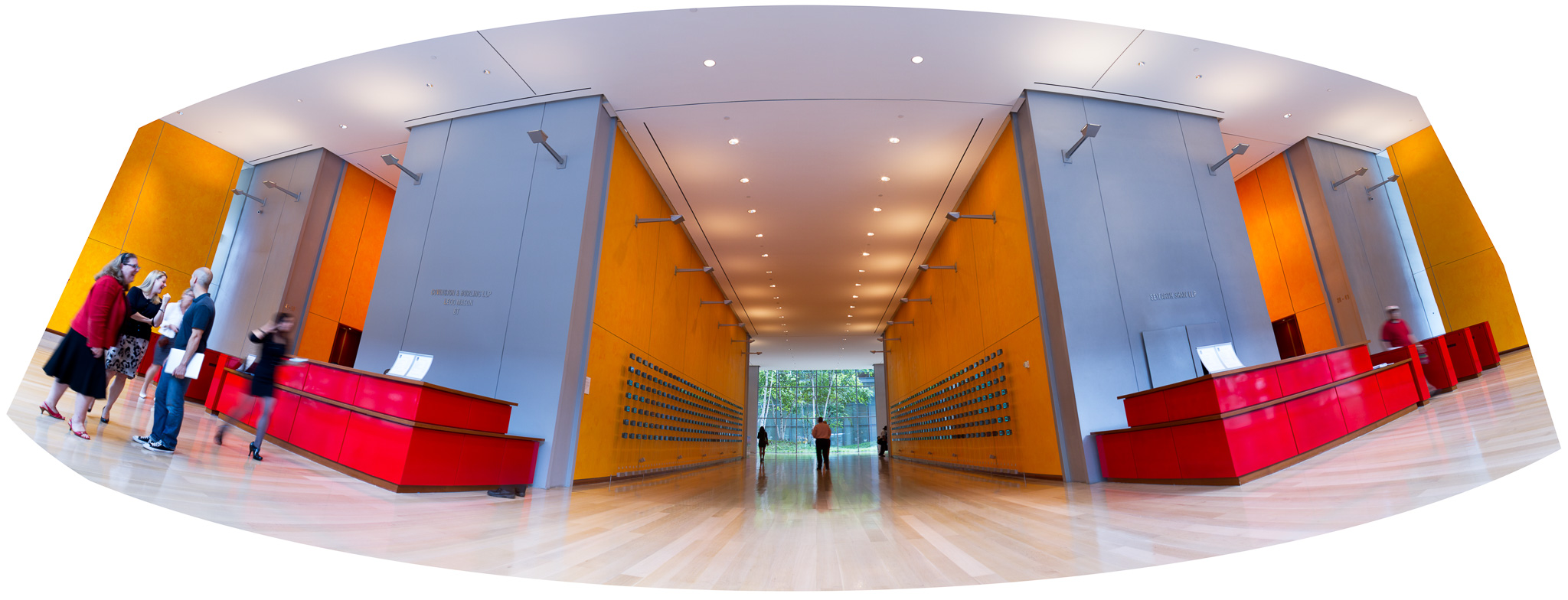
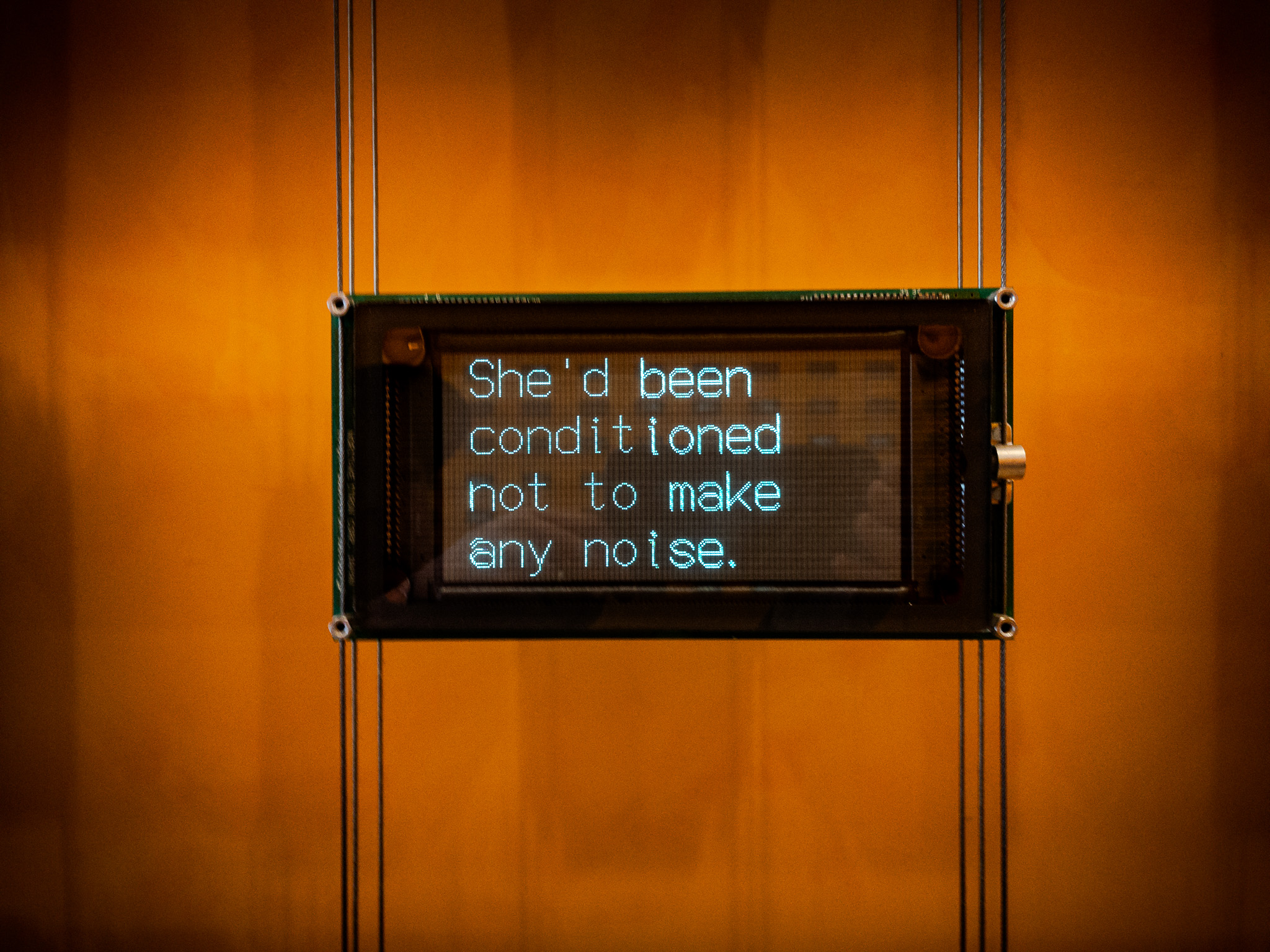
Client: The New York Times
Location: New York, NY, United States
Completion date: 2007
Project Team
Artist
Ben Rubin
EAR Studio Inc.
Artist
Mark Hansen
Columbia University
Building Architect
Renzo Piano
Renzo Piano Building Workshop
Fabricator
Marty Chafkin
Perfection Electricks
Project Architect
Peter Zuspan
Bureau V Architecture
Project Architect
Lyn Rice
Rice+Lipka Architects
Project Architect
Astrid Lipka
Rice+Lipka Architects
Project Engineer
Andrew Milmoe
EAR Studio Inc.
Overview
Moveable Type (2007) is a media installation by Ben Rubin and Mark Hansen. The artwork was commissioned by The New York Times for the lobby of its new headquarters building 620 8th Avenue, New York City. It is open to the public from Monday through Friday during business hours. The work consists of two suspended gris of vacuum-fluorescent display panels. Each grid is 50' long x 7' high and contains 280 display panels. Moveable Type pulls text in real time from the Times' latest stories as they are published, and it also draws on the millions of articles in Times 150-year archive. The artwork then applies statistical methods and natural-language processing algorithms to parse, transform, and animate this content, constructing an ever-changing portrait of the New York Times.Goals
When the project was completed in 2007, the Times was in the early stages of its transition from being a print newspaper to a multi-platform news organization. The goal of the artwork was to reflect the New York Times' 150-year history, and at the same time to engage with the organization's digital future.
Process
In mid 2007, several months ahead of the artwork's completion, Mark Hansen and Ben Rubin set up a folding table in the Times' lobby and began the final software development of the piece. This allowed us to see the results of our code in situ, and it also brought us into contact with the Times' staff. Their enthusiasm, questions, and feedback informed and influenced the final form of the piece, and it helped form a lasting bond between the work and its most important audience.